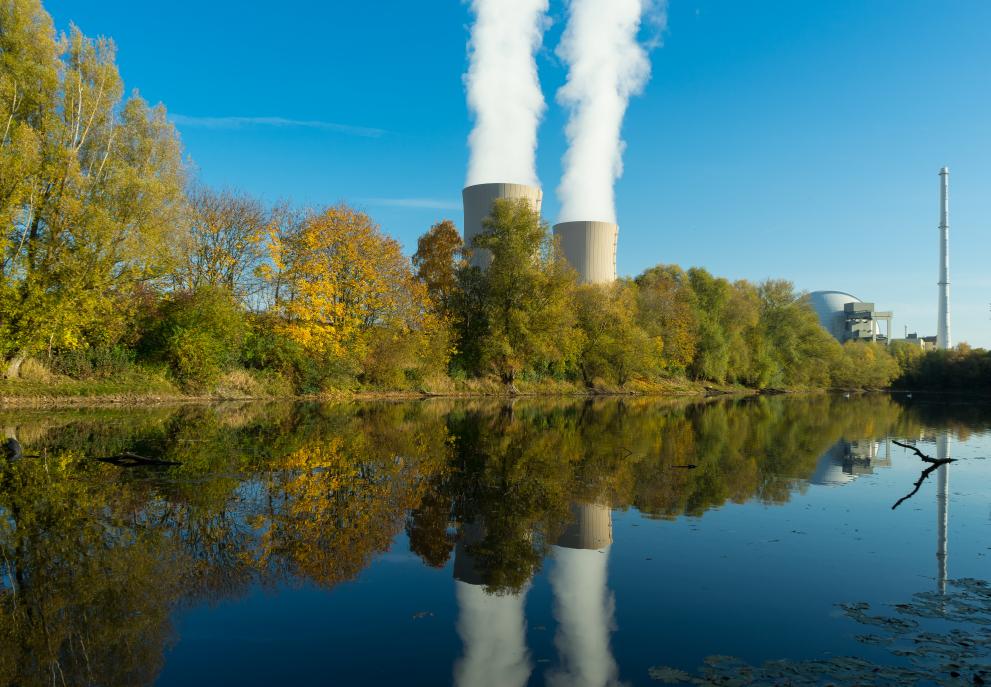
A new JRC report quantifies the amount of freshwater needed at national and regional level by the energy system across the EU and the UK until 2050, under six energy scenarios.
This study shows that the shift towards a greener energy industry required to tackle the climate crisis could also have a very positive overall impact on freshwater resources, significantly reducing withdrawal (by 26%-51%, from 63-69 billion m3 in 2015 to 31-48 billion m3 in 2050) and consumption (from 7-8 billion m3 in 2015 to 6-7 billion m3 in 2050).
The energy and water systems are deeply intertwined. On one hand, energy is required to collect, pump, treat and desalinate water. On the other hand, for example, thermal power plants need large quantities of cooling water to function. During the last years, heatwaves and droughts have at times heavily reduced the freshwater available to the energy system; for this reason, several nuclear power plants had to be temporarily closed last summer and hydropower output was affected in various parts of Europe. Climate change will likely make episodes like these more frequent and intense in the next few decades, when in turn the overall energy demand is expected to increase.
The results of the study at regional scale are important because the overall decrease in the use of freshwater resources across the EU and the UK may mask problems in smaller regions, especially in those where a longer-term use of water-intensive energy technologies is expected. Countries like Germany, France, Spain, Poland, and Bulgaria would account for most of the freshwater needs of the energy system throughout the 2015-2050 period, since their power systems will operate sizeable amounts of water-intensive nuclear and coal-fired power generation capacity during that period according to the energy scenarios considered. The analysis identifies the regions that would be most affected by this trend.
This study also assessed how a wider use of four important low-carbon energy sources – biomass, hydrogen, carbon capture and sequestration (CCS), and hydropower – would affect the overall EU freshwater use, concluding that any increment in their usage (particularly for hydrogen and CCS) would have a negative impact on freshwater resources. Higher biomass production could increase consumptive freshwater needs by 21% in 2050, up to 1.59 billion m3. In the six energy scenarios considered, the penetration of hydrogen could increase consumptive freshwater demand only by 0.02-0.05 billion m3 in 2050, but this impact could be much higher under more ambitious scenarios such us those considered in the European Commission Long Term Strategy, where the additional freshwater consumption would grow by 22%-225% in 2050, or 1.4-16 billion m3. By far the penetration of CCS from 2040 onwards could have the highest impact on water resources. In 2050
CCS could increase the withdrawal needs of the energy sector by 6% to 58%, up to 2.5-25 billion m3, depending of the scenario. The impact of CCS on water consumption would be higher, growing by 22%-225% in 2050, or 1.4-16 billion m3. Evaporative consumption due to hydropower generation is estimated to change from 2.4 and 3.4 billion m3 in 2015 to 2.4 and 4.2 billion m3 in 2050.
The findings in this report are intended to be used in combination with estimates of the water requirements of other sectors (for example agriculture), in order to assess the overall stress on water resources and support the design of energy and environmental policies. Knowing in advance how much water will be required in a given region allows to identify potential problems earlier and ensures that the pressure on the locally available water resources is bearable.
This study follows up a previous JRC report carried out in the framework of the Water-Energy-Food-Ecosystem Nexus Project (WEFE), where policy and operational measures, still valid, were proposed to improve the interaction between the water and energy systems.
Related Content
JRC Report "Projected freshwater needs of the energy sector in the European Union and the UK"
Details
- Publication date
- 8 July 2020
